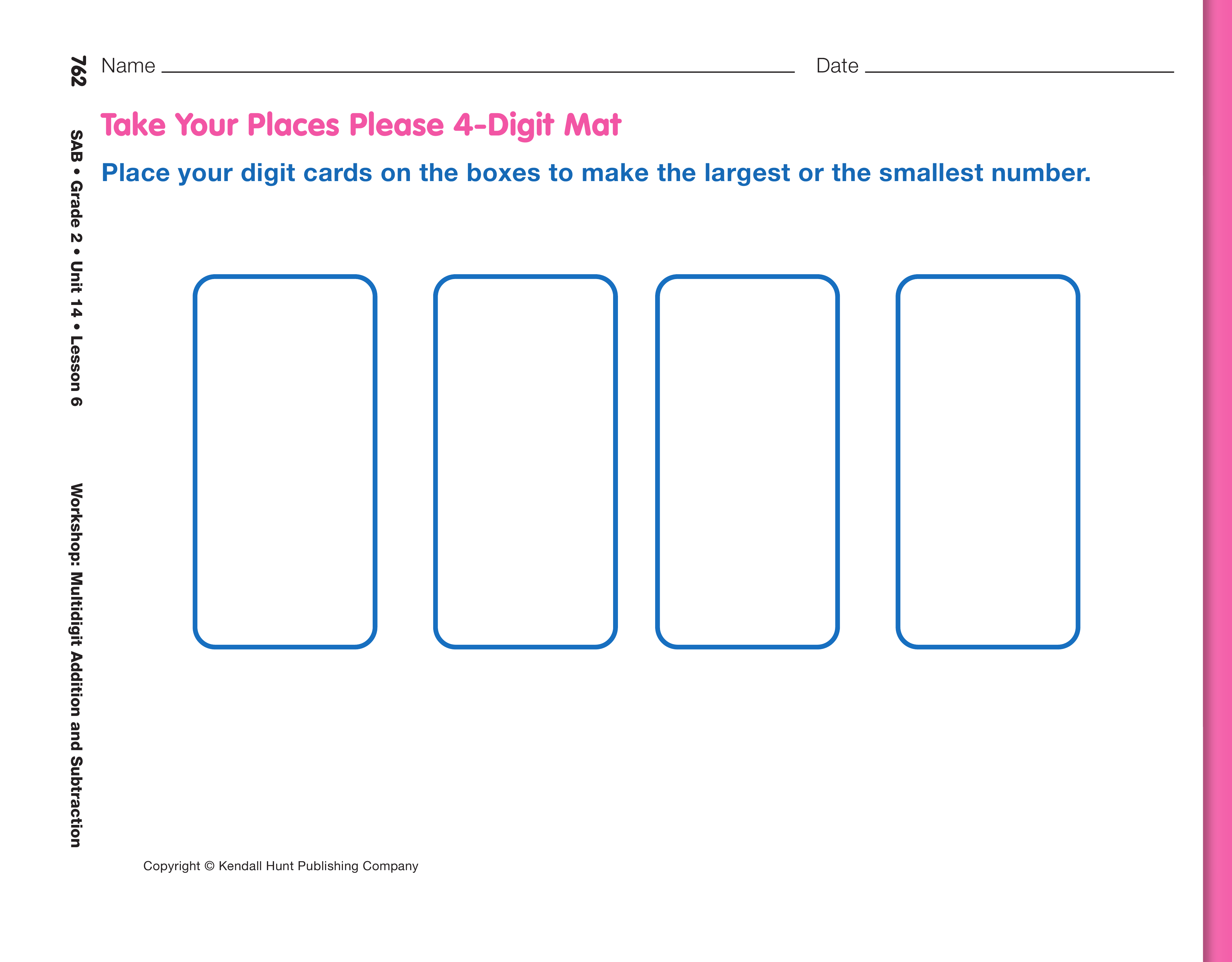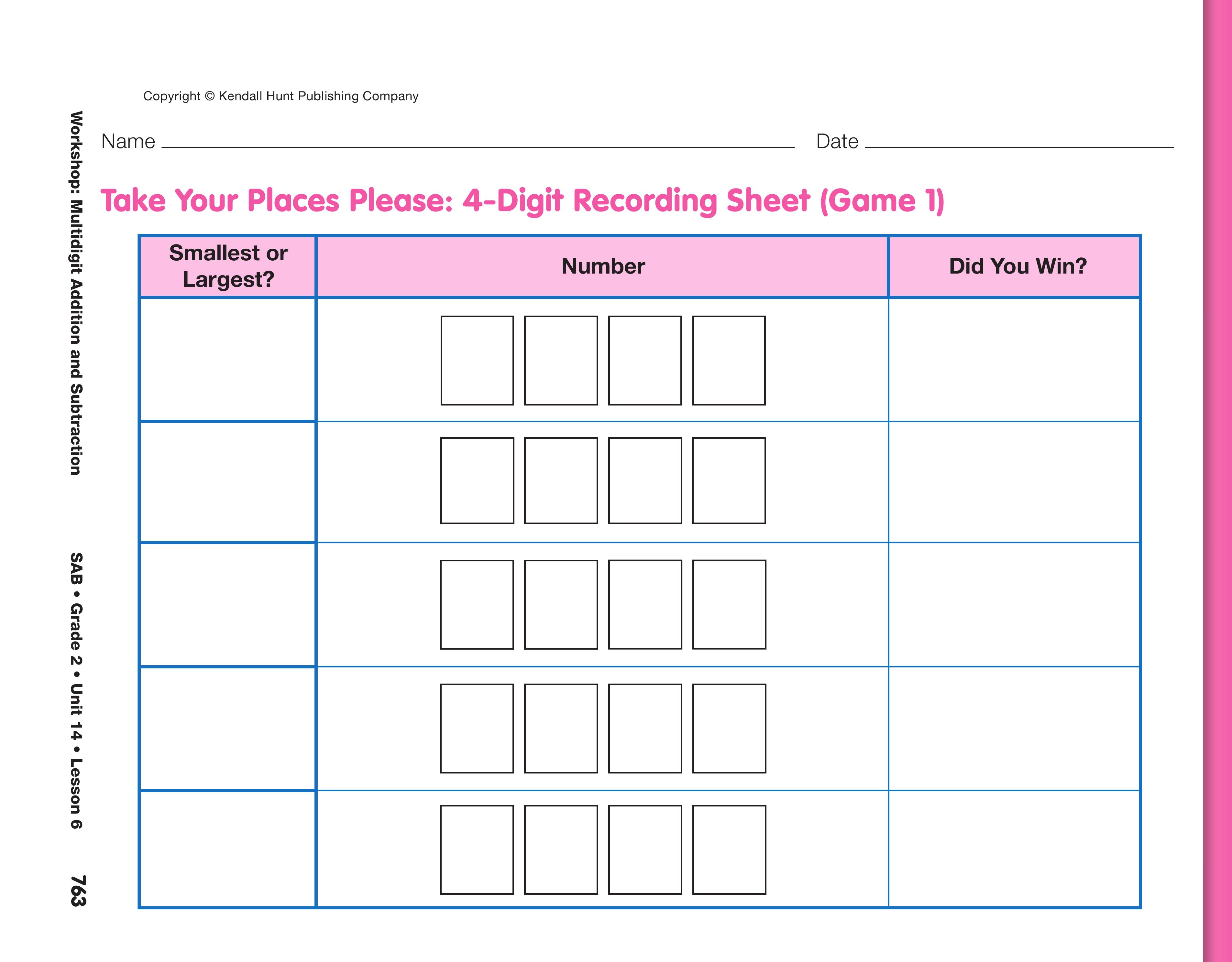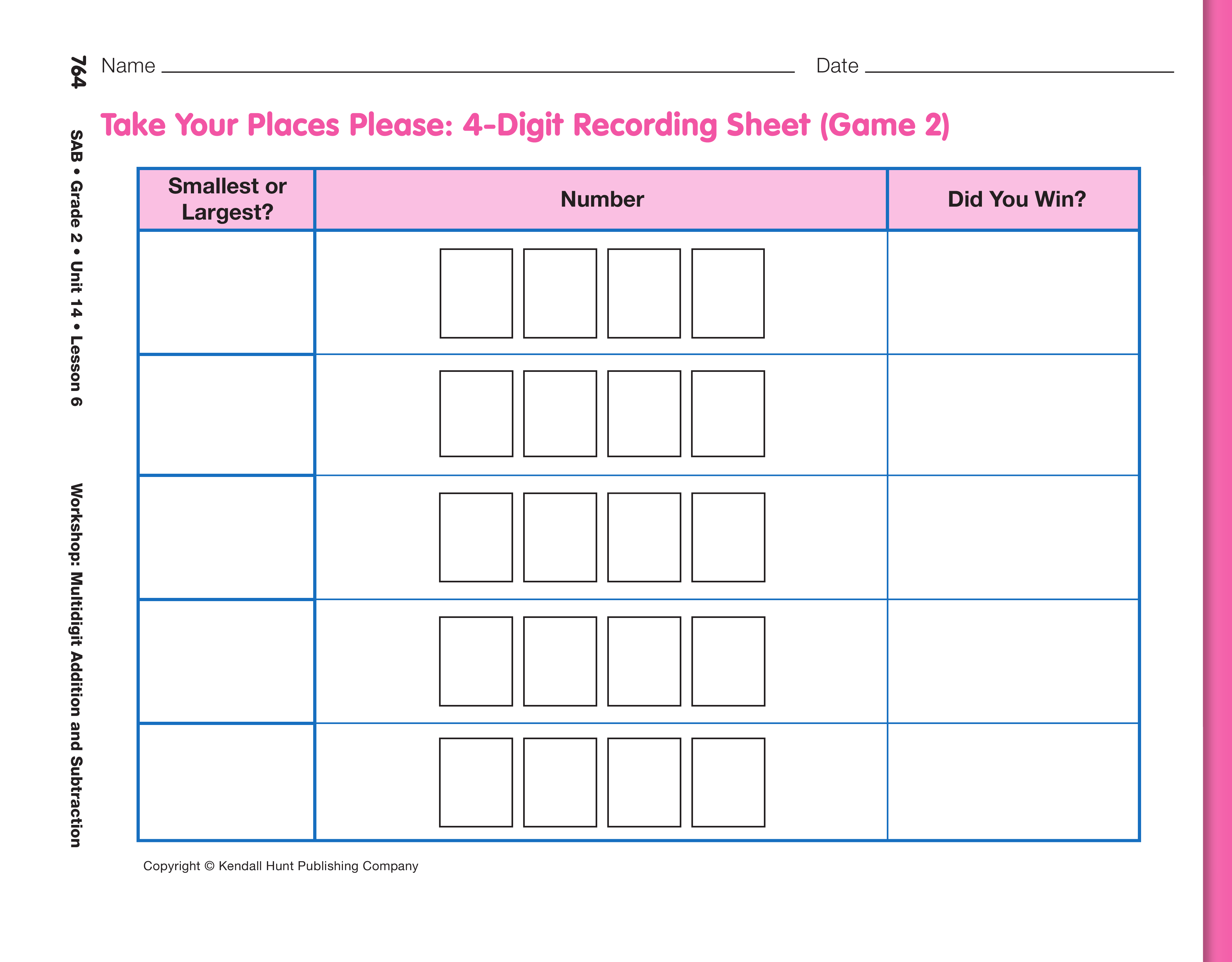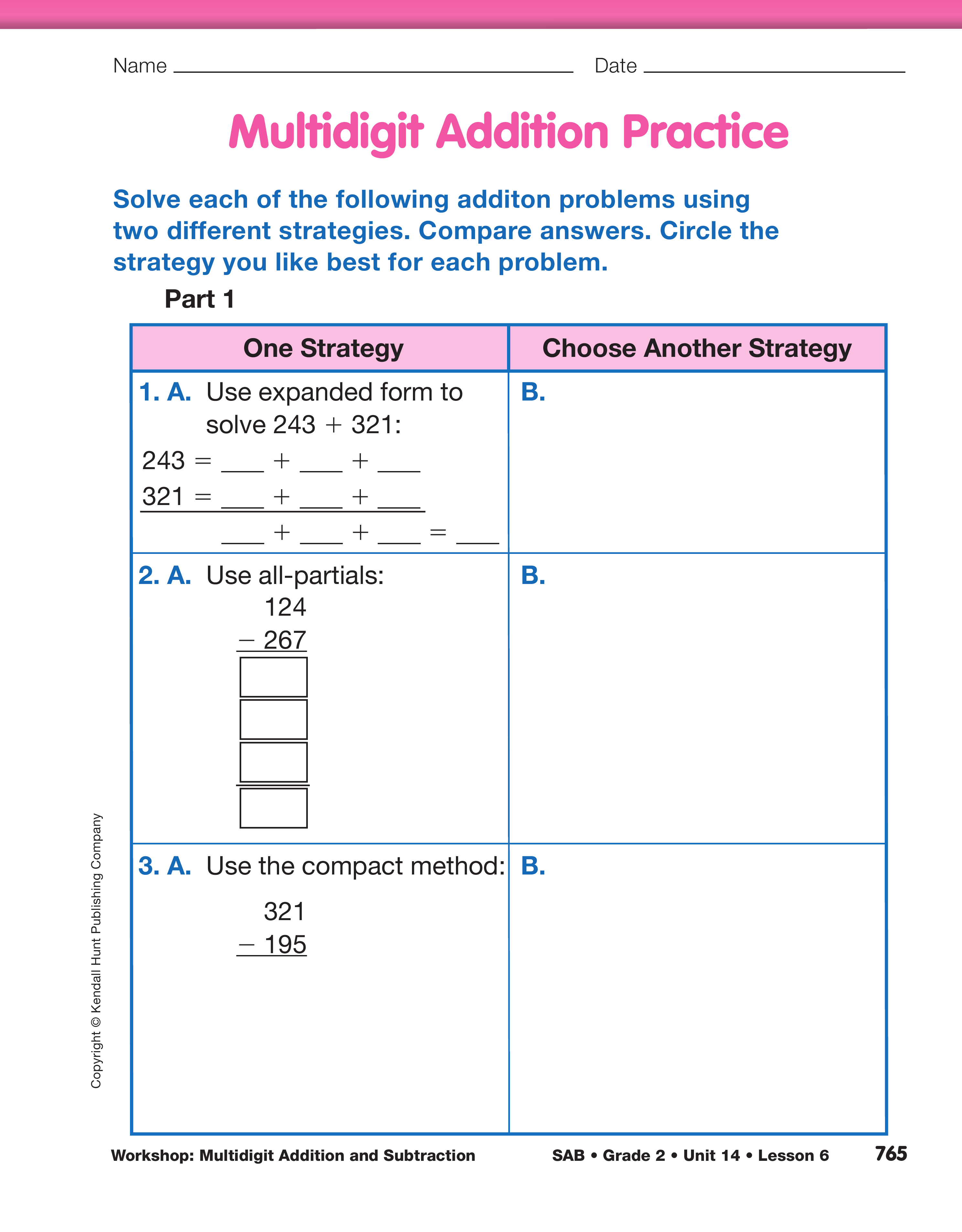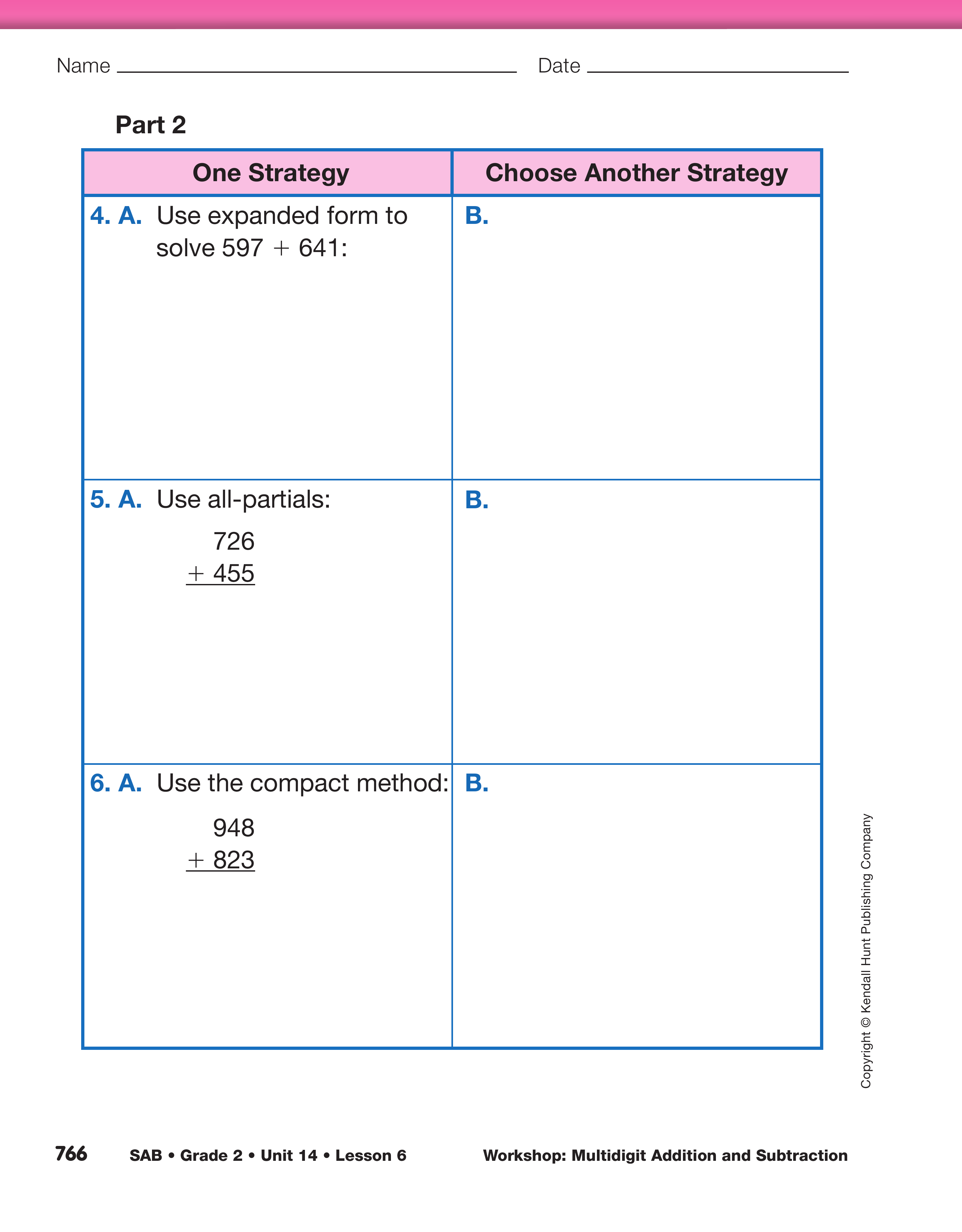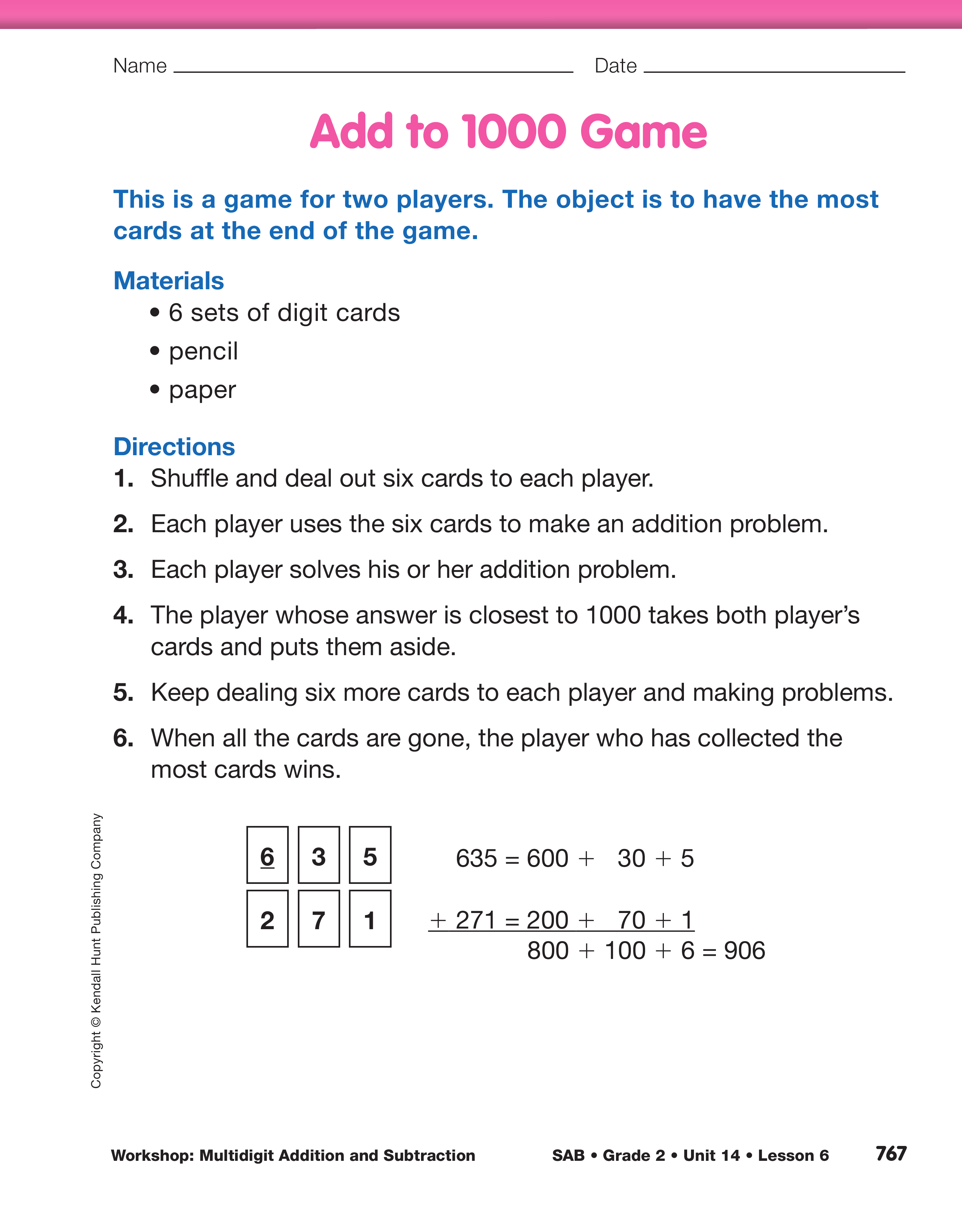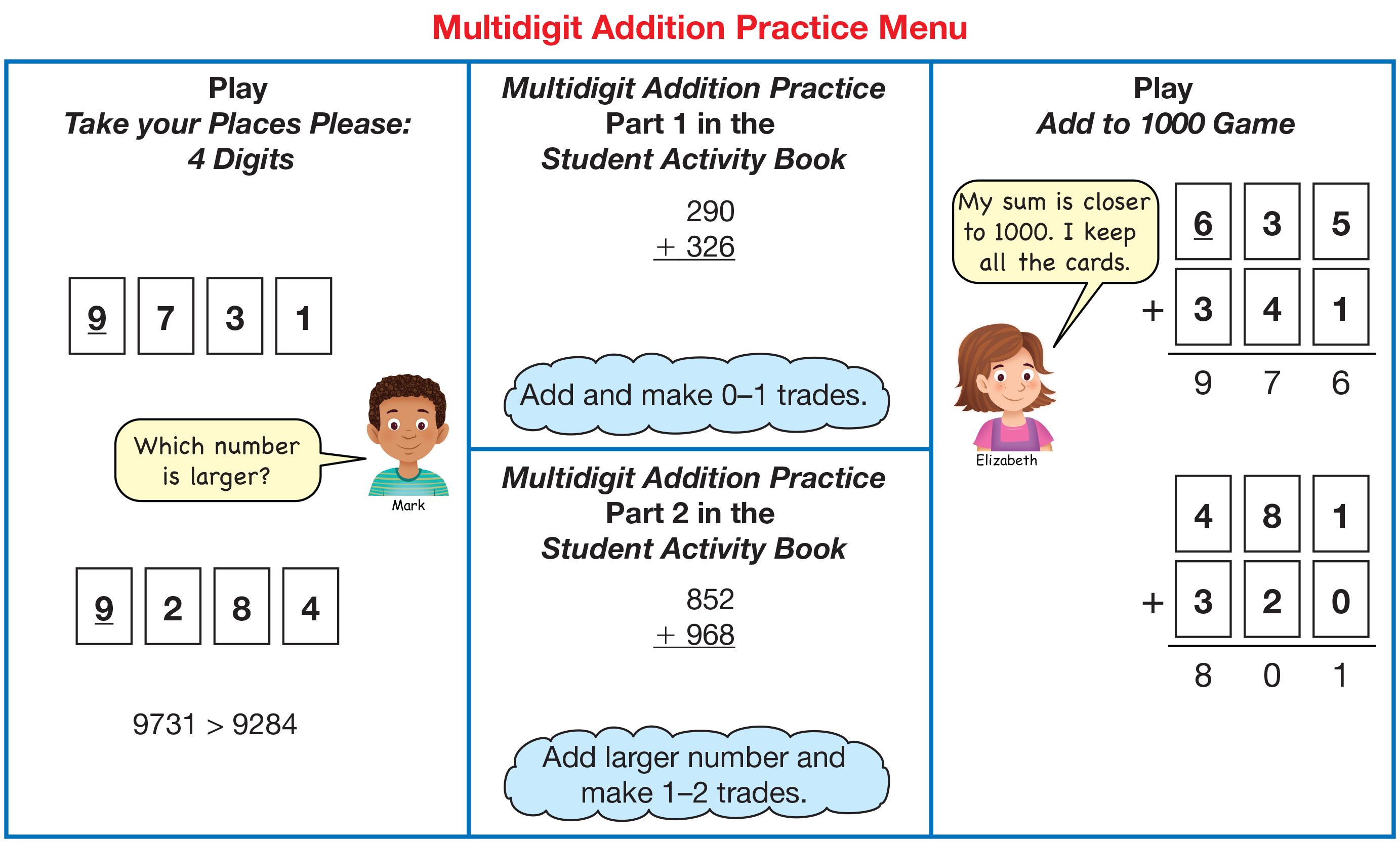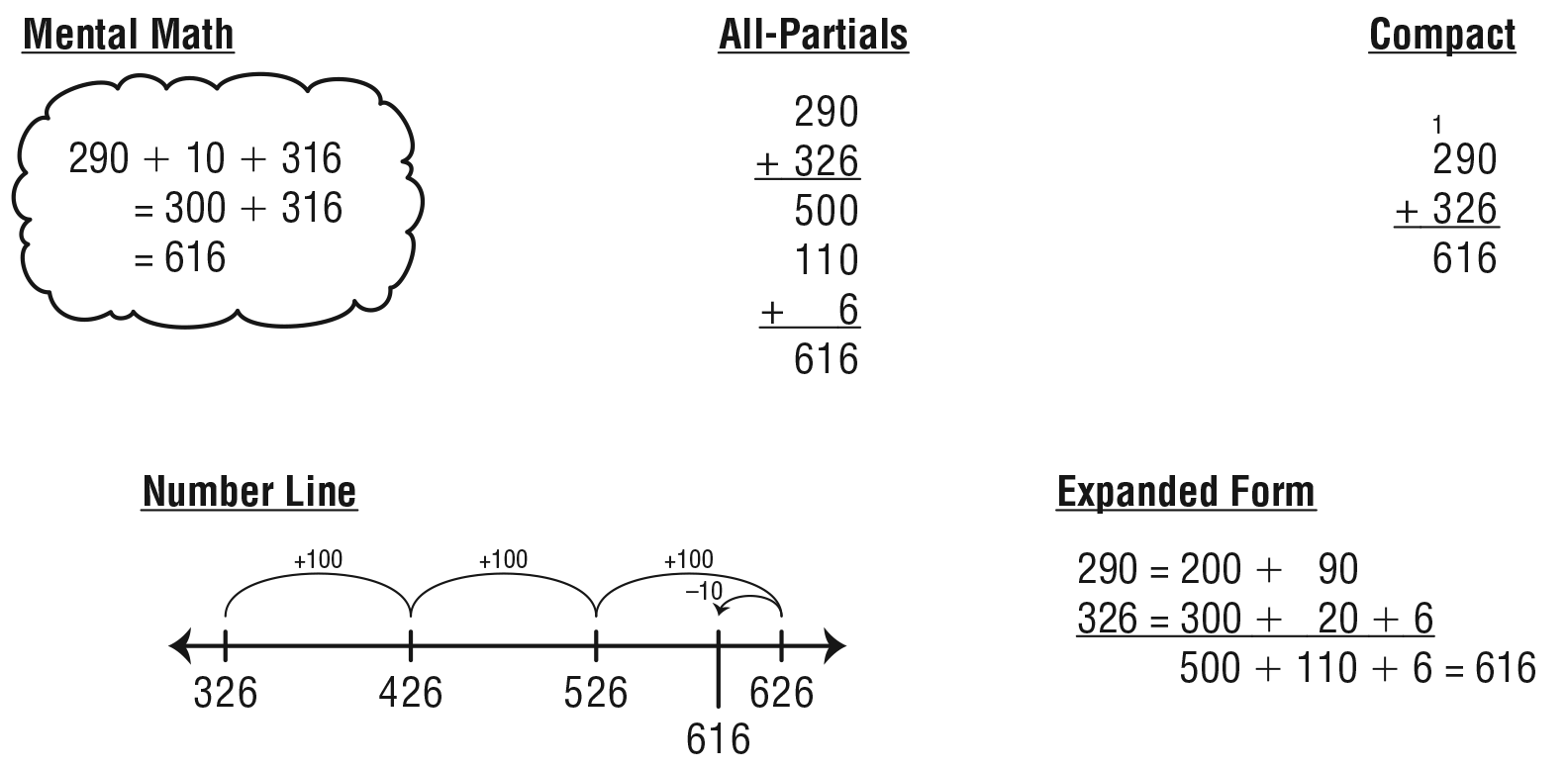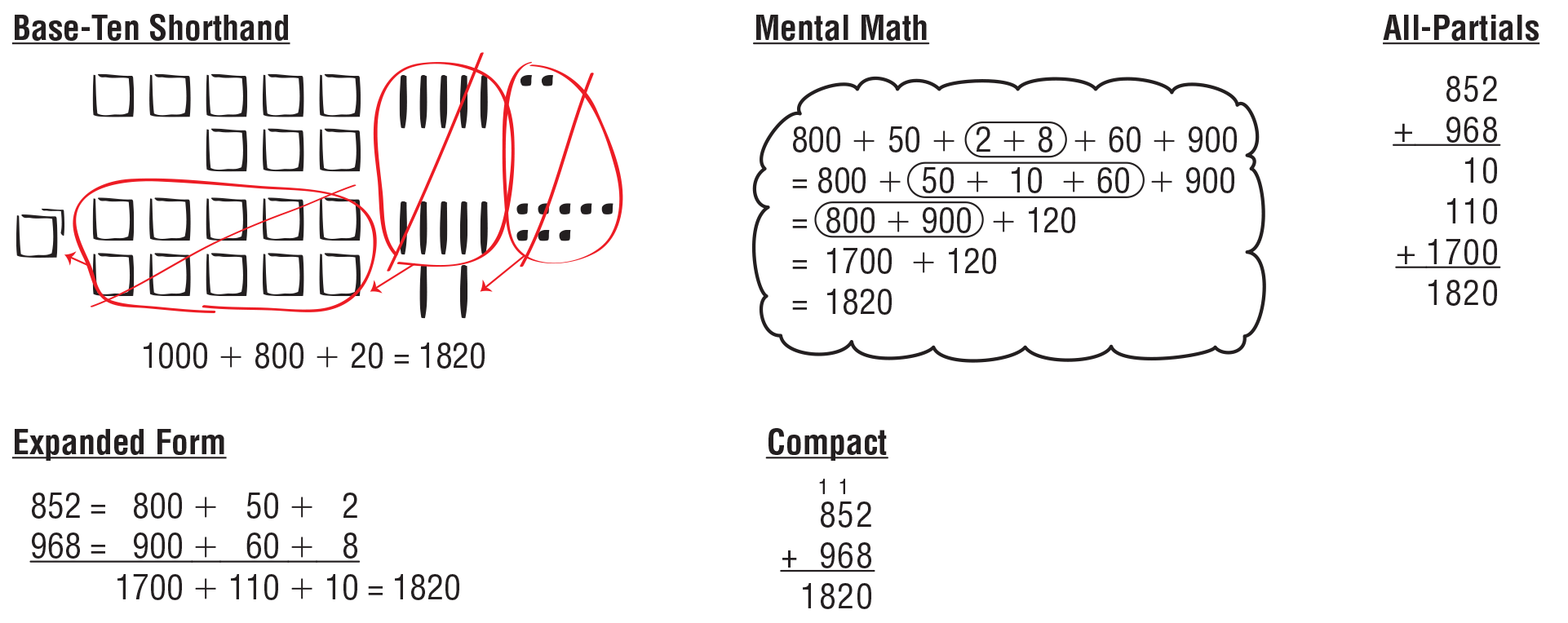Workshop: Multidigit Addition and Subtraction
Est. Class Sessions: 2–3Developing the Lesson
Part 1: Multidigit Addition Strategies
Introduce Addition Practice Menu. Display and direct students' attention to the Multidigit Addition Practice Menu page in the Student Activity Book. See Figure 1. Tell students to tear out the menu as it will help guide them to appropriate practice. Students will do one activity from each column of the menu. Briefly introduce the selections in each column.
Introduce and Play Take Your Places Please. The game Take Your Places Please: 4 Digits is offered in the first column. Everyone will play this game. Students played Take Your Places Please in Unit 6. In this game only, each student will use only one set of digit cards. Guide the students as they pull the ten cards with digits 0–9 out of their larger decks as you do the same. Have them set the remaining cards aside for later.
Display and review the directions for the new version of the game on the Take Your Places Please: 4 Digits pages in the Student Activity Book. Introduce the game by explaining that for each round, a player's goal is to make a larger (or smaller) 4-digit number than his or her partner's number.
Next, display the Take Your Places Please 4-Digit Mat. Demonstrate how the leader will draw a digit card. Both players will place the card with that digit in any one of the boxes on their own digit mat. Once they place a digit, it cannot be moved; however, players may choose to discard one card during each round.
As you demonstrate the game, ask:
Players repeat this process until they have made a 4-digit number.
Display the Take Your Places Please: 4-Digit Recording Sheet and show how to record the round. Players compare the numbers to complete the round.
Ask:
Organize students into pairs to play the game. The game lasts 5 rounds. Recording Sheets for two games are provided if some student pairs are able to go on to a second game in the time allotted. Ask students to store the digit cards with the rest of the deck in an envelope for future games.
After students have had the opportunity to play at least 5 rounds, reconvene as a group and ask:
Choose Multidigit Addition Practice. Display the following two problems and ask students to first estimate the sums for each one:
290 852
+ 326+ 968
Direct students' attention back to the Multidigit Addition Practice Menu. These problems are listed in the second column on the menu. Ask students to solve them any way they choose. See Figures 2 and 3 for possible solution strategies. Students may refer to the Addition Strategies Menu in the Student Activity Book Reference section. Have base-ten pieces available.
After they have completed the problems, ask questions such as the following:
The problems in Part 1 of the Multidigit Addition Practice pages in the Student Activity Book provide problems with 0–1 trades, such as 290 + 326 and have a little more scaffolding. Those in Part 2 provide problems similar to 852 + 968 with 1–2 trades and involve larger numbers.
Ask the following questions to help students choose their practice:
Tell students to circle one activity, Multidigit Addition Practice Part 1 or Part 2, from the second column of the Multidigit Addition Practice Menu.
Introduce Add to 1000 Game. The third column on the Multidigit Addition Practice Menu lists the Add to 1000 Game. Everyone will play this game. Students played Add to 100 in Unit 7. Introduce the new version of the game by displaying the Add to 1000 Game page from the Student Activity Book. You will need the display deck of digit cards that you prepared prior to the lesson. Read the directions to the game aloud. Shuffle the cards and ask a student to volunteer to play a demonstration game with you. Each player uses 6 cards to make an addition problem. The player whose answer is closest to 1000 takes all the cards. Explain to students that sums can be more than or less than 1000 and that they will need to determine which player's sum is closest to 1000. The player with the most cards at the end of the game wins.
Practice Multidigit Addition and Play Add to 1000 Game. When students are ready with their tasks, ask them to begin working. Remind students that they can refer to the Addition Strategies Menu in the Student Activity Book Reference section as they work on problems and play the game. Have tools such as base-ten pieces readily available. As students complete the problems on the Multidigit Addition Practice pages, they can find a partner and play the Add to 1000 Game. Alternatively, you may assign partners and decide to have the entire class move on to the game when most students have completed the Multidigit Addition Practice pages.
Unfinished problems in either Part 1 or Part 2 of the Multidigit Addition Practice pages in the Student Activity Book may be assigned as homework. Have students store the digit cards in an envelope for use in Part 2 of the Workshop.


















